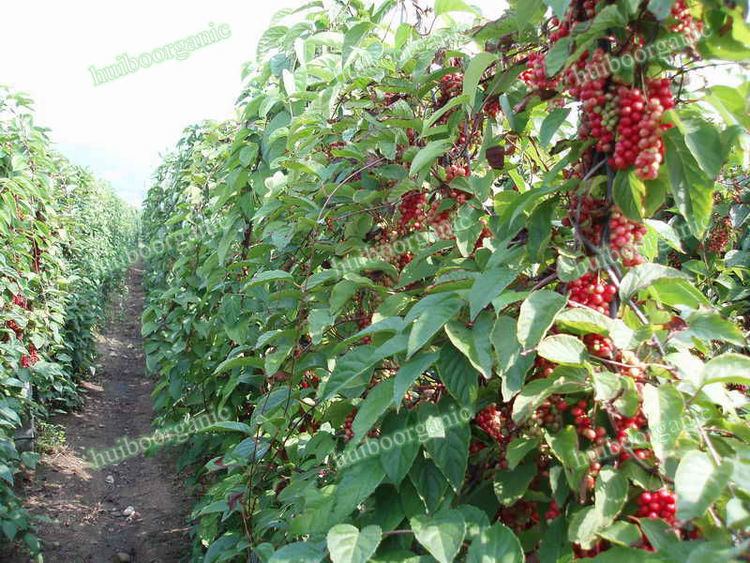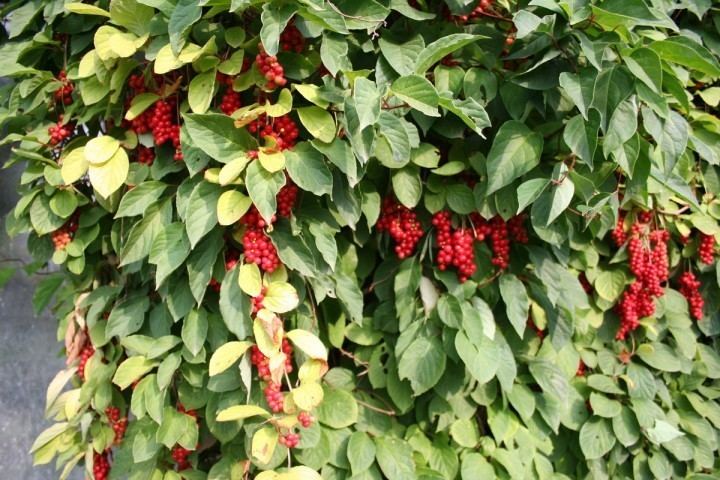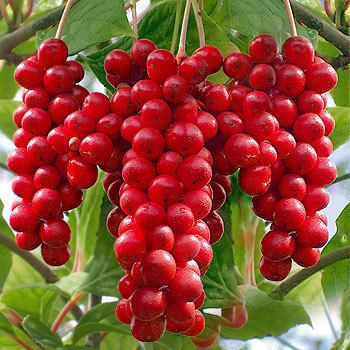Scientific name Schisandra chinensis Rank Species | Genus Schisandra Higher classification Schisandra | |
 | ||
Similar Rhodiola rosea, Schisandra, Siberian Ginseng, Milkvetch, Wolfiporia extensa | ||
Schisandra chinensis (common name: magnolia-vine, Chinese magnolia-vine, schisandra), whose fruit is called magnolia berry or five-flavor-fruit, (from Chinese wǔ wèi zi) is a deciduous woody vine native to forests of Northern China and the Russian Far East. It is hardy in USDA Zone 4. The plant likes some shade with moist, well-drained soil. The species itself is dioecious, thus flowers on a female plant will only produce fruit when fertilized with pollen from a male plant. However, a hybrid selection titled 'Eastern Prince' has perfect flowers and is self-fertile. Seedlings of 'Eastern Prince' are sometimes sold under the same name, but are typically single-sex plants.
Contents
- Chinese magnolia vine seed schisandra chinensis seeds on www myseeds co
- Growing information
- Etymology
- Uses
- Culture
- References

Chinese magnolia vine seed schisandra chinensis seeds on www myseeds co
Growing information

Schisandra is native to northern and northeastern China (Manchuria). Cultivation requirements are thought to be similar to those of grapes. Plants require conditions of moderate humidity and light, together with a wet, humus-rich soil. Tens of tons of berries are used annually in Russia in Primorsky Krai and Khabarovsk Krai for the commercial manufacture of juices, wines, extracts, and sweets.
Etymology

Its Chinese name comes from the fact that its berries possess all five basic flavors: salty, sweet, sour, pungent (spicy), and bitter. Sometimes, it is more specifically called běi wǔ wèi zi; literally "northern five-flavor berry") to distinguish it from another traditionally medicinal schisandraceous plant Kadsura japonica that grows only in subtropical areas. Another species of schisandra berry, Schisandra sphenanthera, has a similar but different biochemical profile; the Chinese pharmacopia distinguishes between S. chinensis (běi wǔ wèi zi) and S. sphenanthera (nan wǔ wèi zi).
Uses

Its berries are used in traditional medicine, where it is considered one of the 50 fundamental herbs. Chemical constituents include the lignans schisandrin, deoxyschisandrin, gomisins, and pregomisin.

In Korean, the berries are known as omija (hangul – five flavours). The cordial drink made from the berries is called omija cha, meaning "omija tea"; see Korean tea. In Japanese, they are called gomishi. The Ainu people used this plant, called repnihat, as a remedy for colds and sea-sickness.

Interest in limonnik (S. chinensis) in Russia was associated with ethnopharmacological investigations by Soviet scientists on berries and seeds.
Culture
In 1998, Russia released a postage stamp depicting S. chinensis.
